Abstract
Bacteriophages in soil for Arthrobacter globiformis were rarely detected unless the soil was nutritionally amended and incubated. In amended soil, phage were continuously produced for at least 48 h, and this did not require the addition of host cells. Rod and spheroid stage host cells added to the amended soil encountered indigenous bacteriophage, but added phage did not encounter sensitive indigenous host cells for some time, if at all. The indigenous phage in nonincubated soil seemed to be present in a masked state which was not merely a loose physical adsorption to soil materials but required growth conditions other than lysogeny for them to increase their titers. The possibility is discussed that the indigenous host cells in nonamended soil are present in a nonsensitive spheroid state, with the cells becoming sensitive to the phage in a rate-limiting fashion as nonsynchronous outgrowth occurs for a portion of the spheroid cells.
Full text
PDF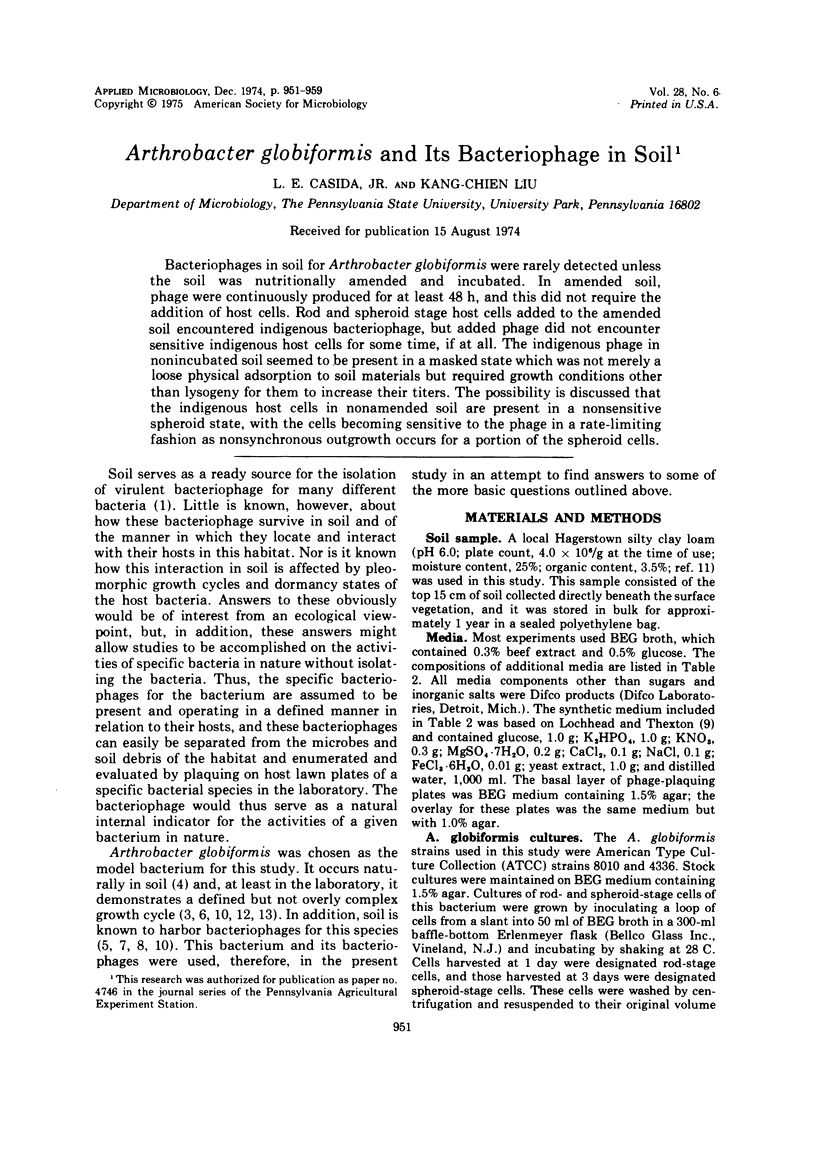
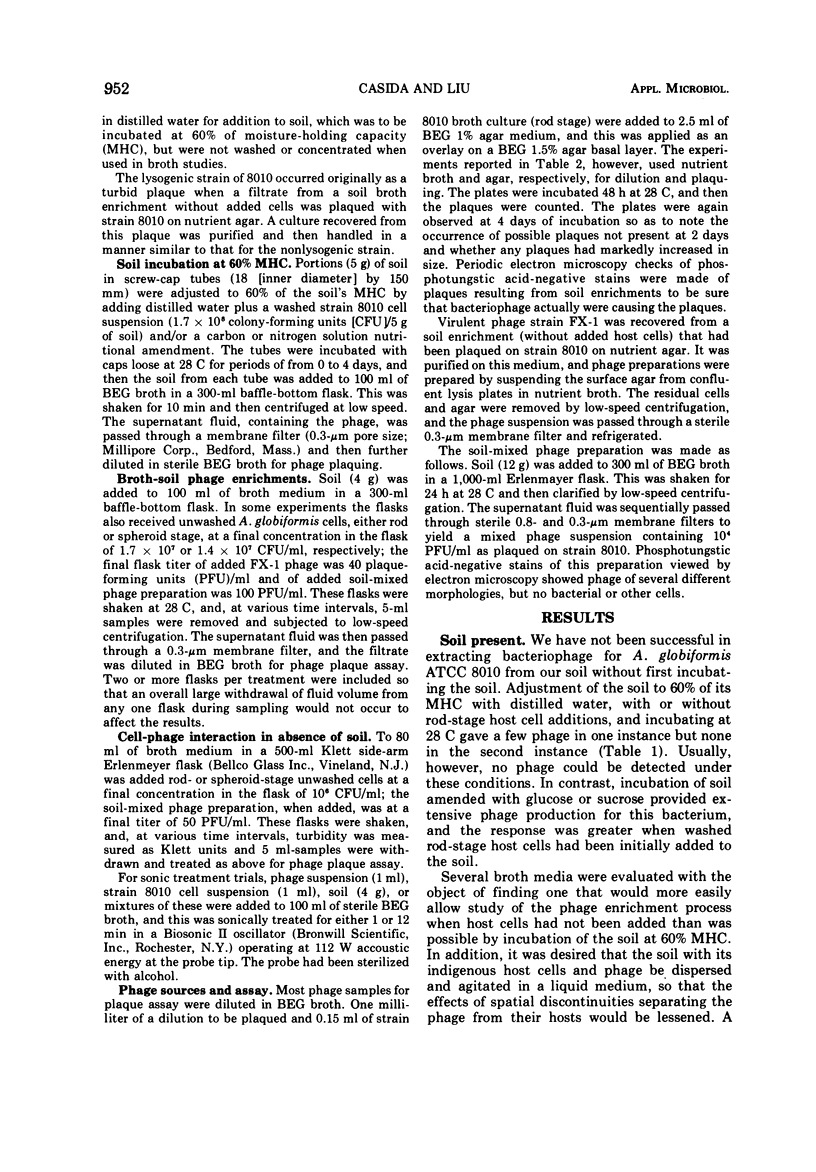
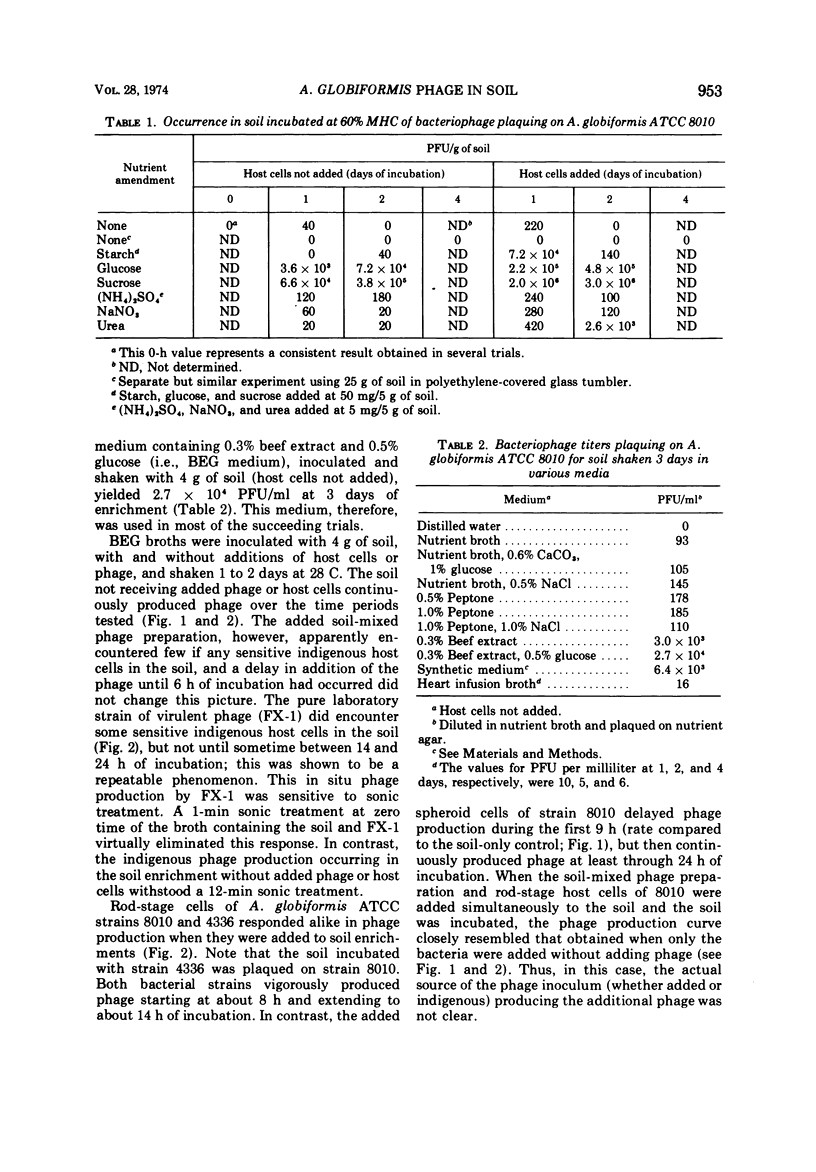
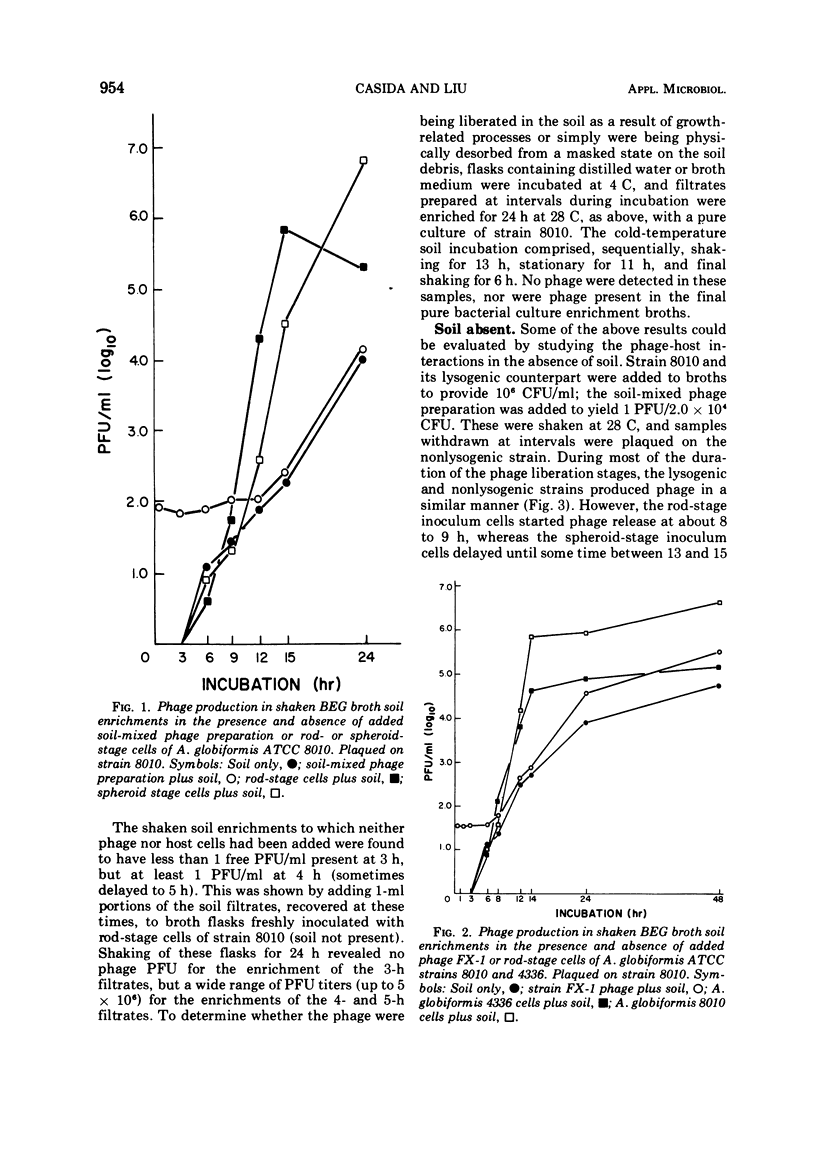
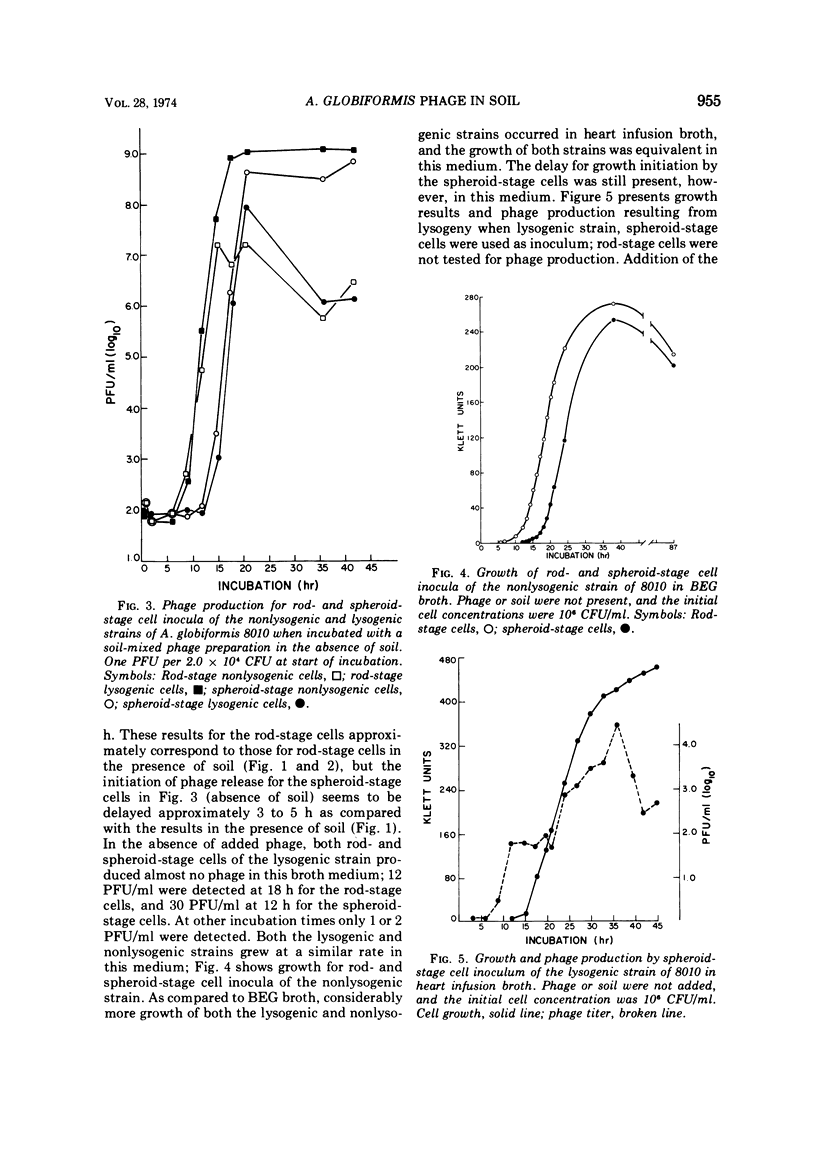
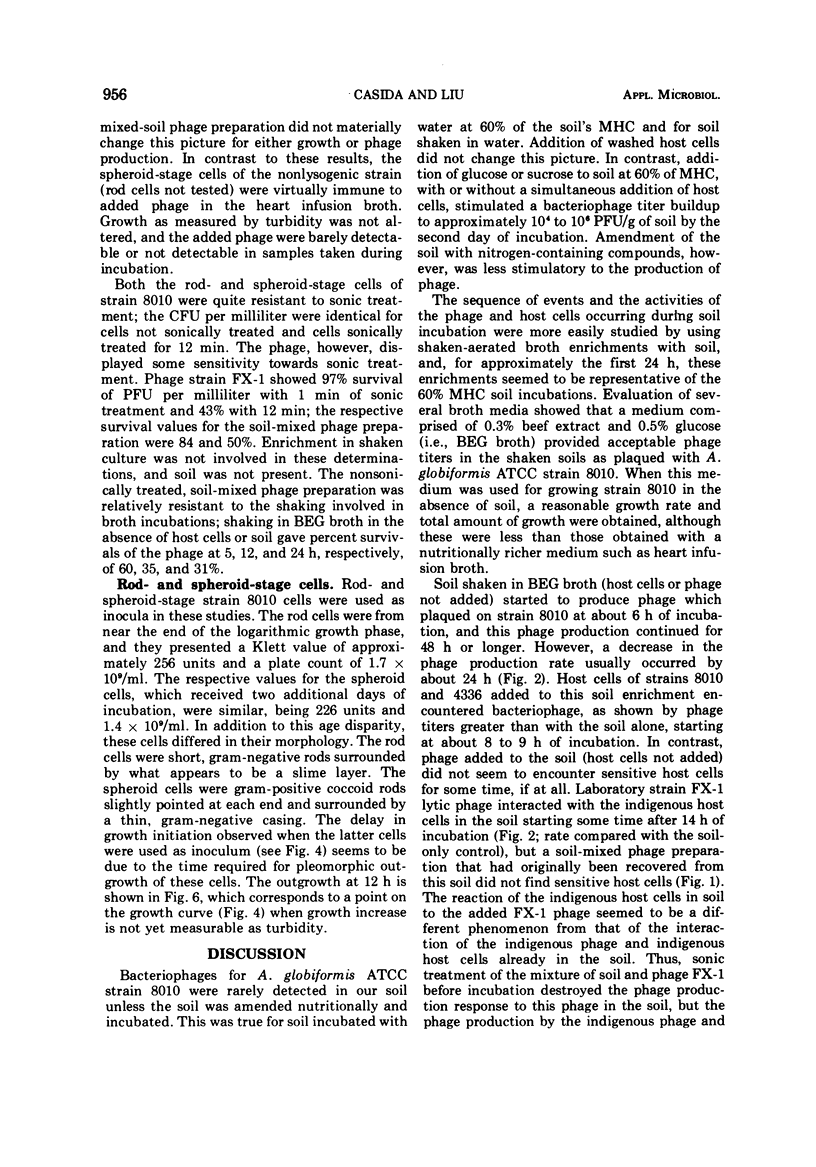
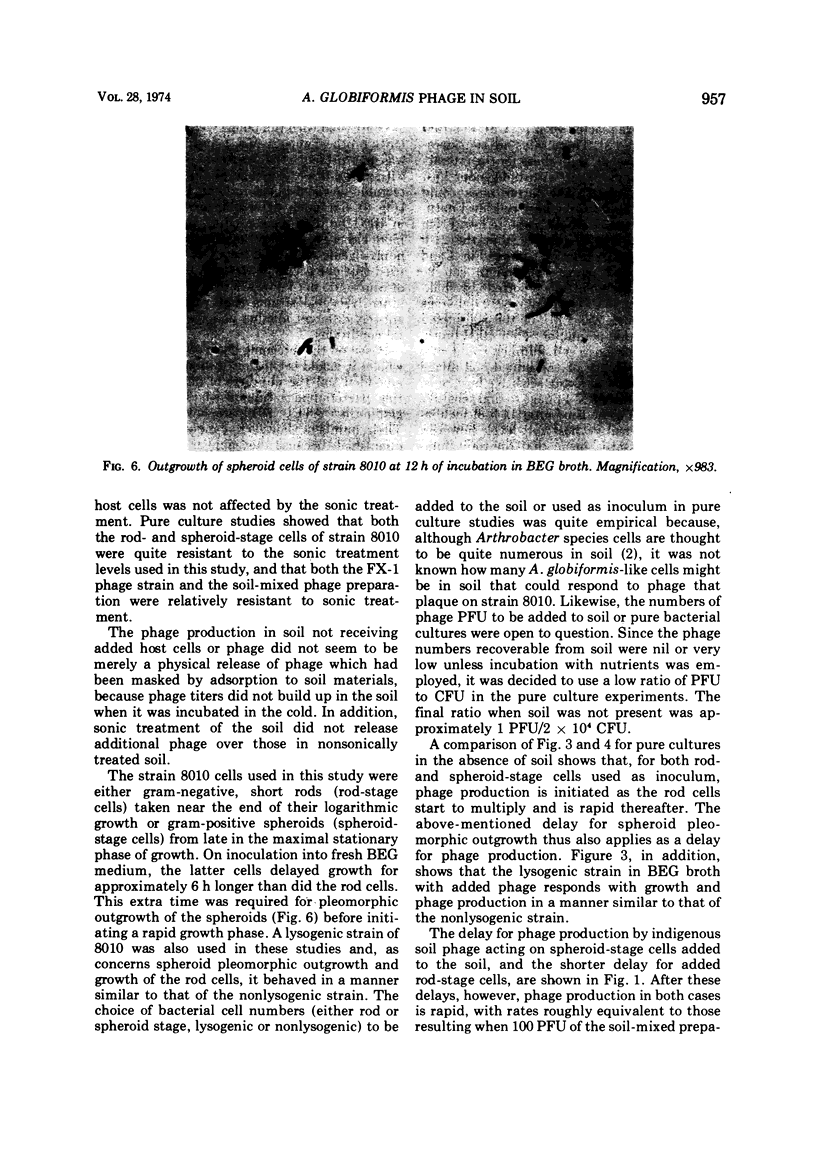
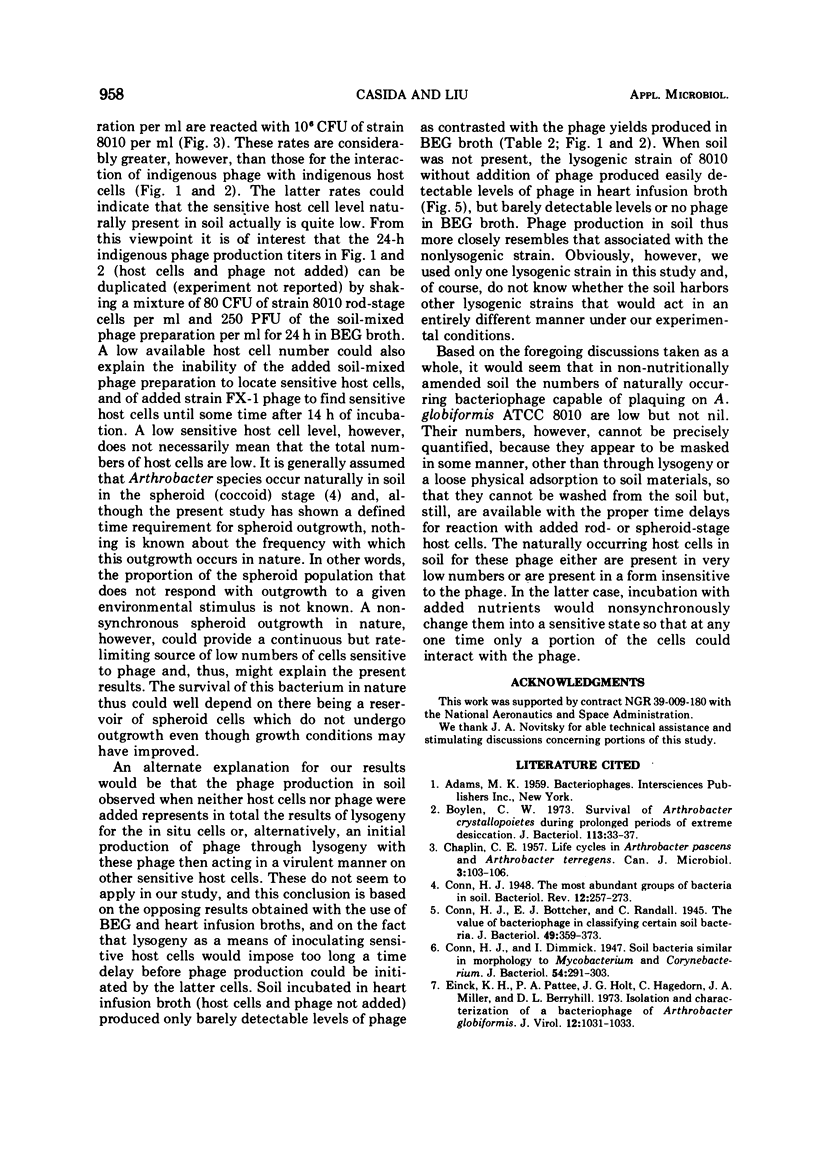
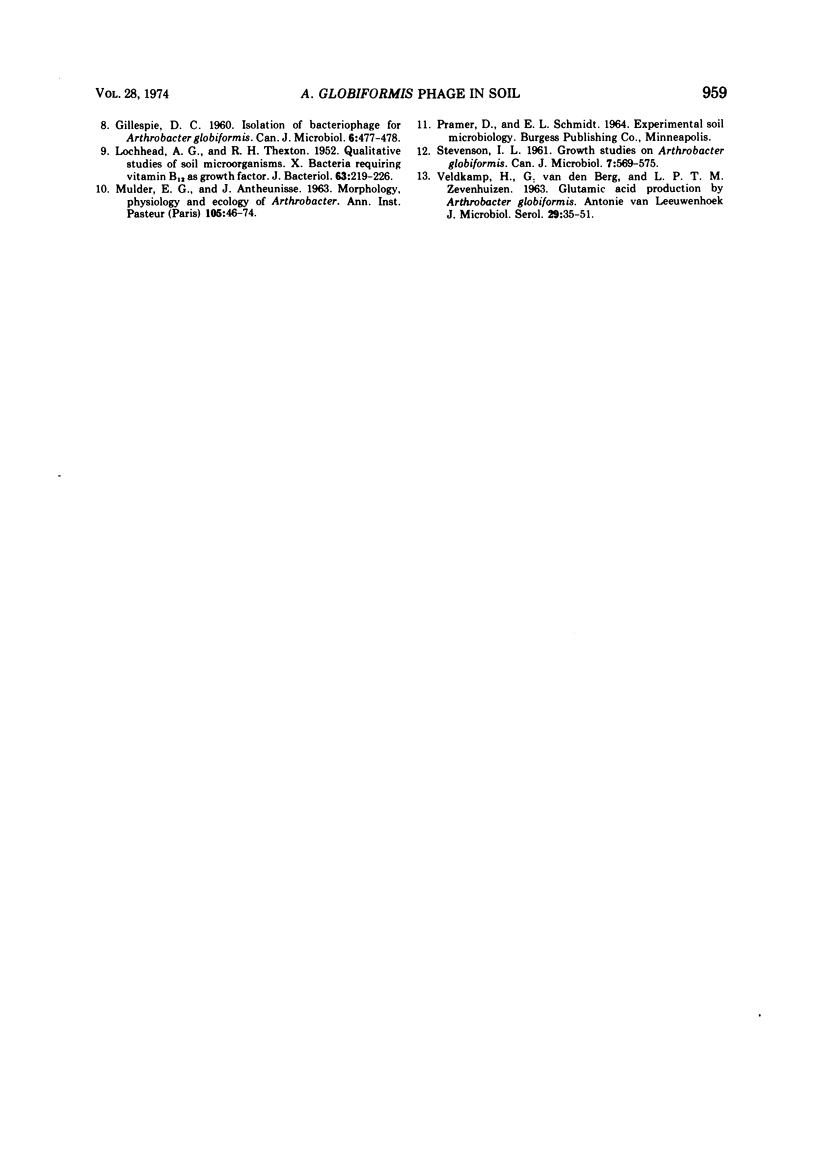
Images in this article
Selected References
These references are in PubMed. This may not be the complete list of references from this article.
- ALLAN Grant Lochhead: an appreciation. Can J Microbiol. 1957 Mar;3(2):103–103. [PubMed] [Google Scholar]
- Boylen C. W. Survival of Arthrobacter crystallopoietes during prolonged periods of extreme desiccation. J Bacteriol. 1973 Jan;113(1):33–37. doi: 10.1128/jb.113.1.33-37.1973. [DOI] [PMC free article] [PubMed] [Google Scholar]
- Conn H. J., Bottcher E. J., Randall C. The Value of Bacteriophage in Classifying Certain Soil Bacteria. J Bacteriol. 1945 Apr;49(4):359–373. doi: 10.1128/jb.49.4.359-373.1945. [DOI] [PMC free article] [PubMed] [Google Scholar]
- Conn H. J., Dimmick I. Soil Bacteria Similar in Morphology to Mycobacterium and Corynebacterium. J Bacteriol. 1947 Sep;54(3):291–303. doi: 10.1128/jb.54.3.291-303.1947. [DOI] [PMC free article] [PubMed] [Google Scholar]
- Conn H. J. THE MOST ABUNDANT GROUPS OF BACTERIA IN SOIL. Bacteriol Rev. 1948 Sep;12(3):257–273. doi: 10.1128/br.12.3.257-273.1948. [DOI] [PMC free article] [PubMed] [Google Scholar]
- Einck K. H., Pattee P. A., Holt J. G., Hagedorn C., Miller J. A., Berryhill D. L. Isolation and characterization of a bacteriophage of Arthrobacter globiformis. J Virol. 1973 Nov;12(5):1031–1033. doi: 10.1128/jvi.12.5.1031-1033.1973. [DOI] [PMC free article] [PubMed] [Google Scholar]
- LOCHHEAD A. G., THEXTON R. H. Qualitative studies of soil microorganisms. X. Bacteria requiring vitamin B12 as growth factor. J Bacteriol. 1952 Feb;63(2):219–226. doi: 10.1128/jb.63.2.219-226.1952. [DOI] [PMC free article] [PubMed] [Google Scholar]
- VELDKAMP H., van den BERG, ZEVENHUIZEN L. P. Glutamic acid production by Arthrobacter globiformis. Antonie Van Leeuwenhoek. 1963;29:35–51. doi: 10.1007/BF02046037. [DOI] [PubMed] [Google Scholar]



